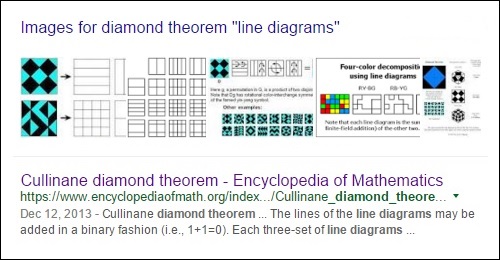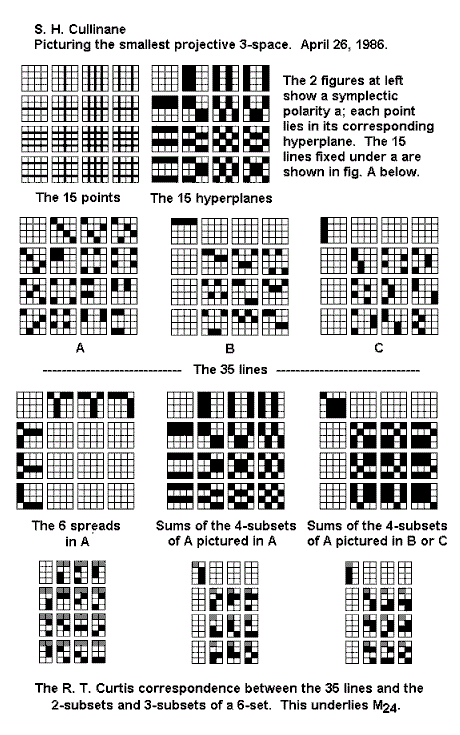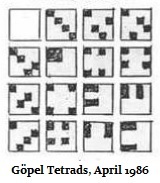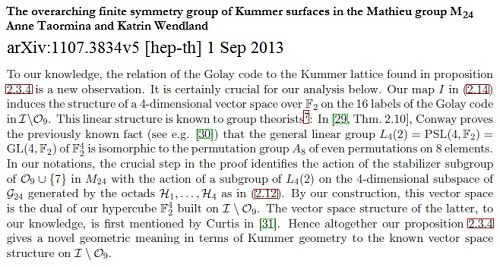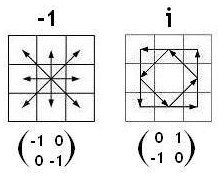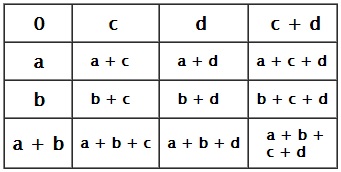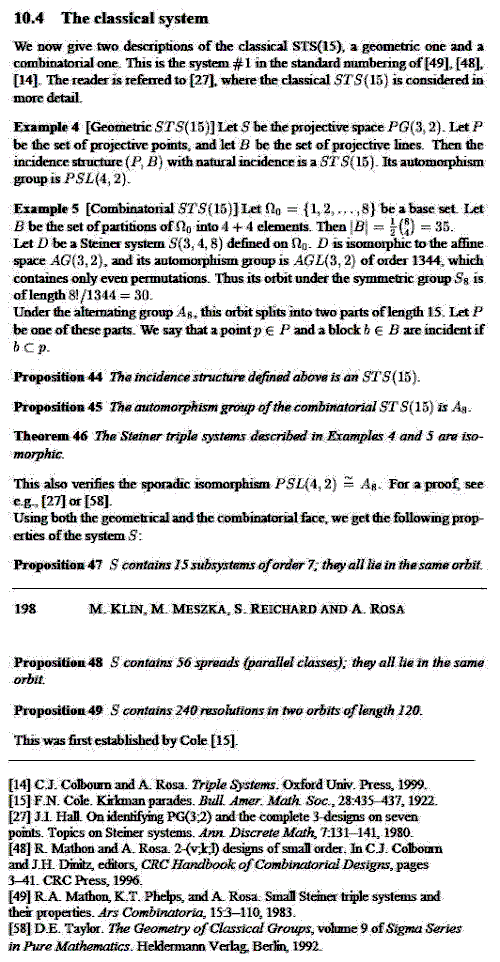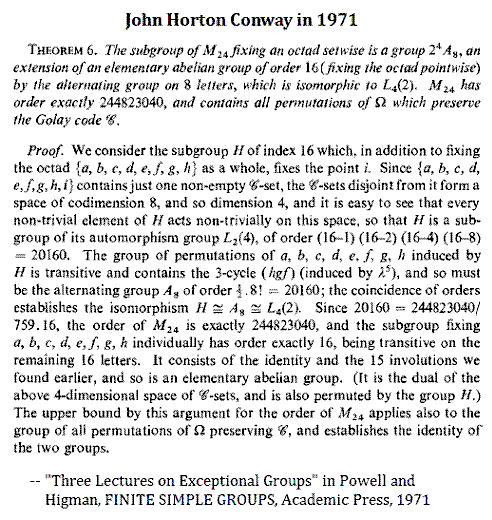A post of September 1, The Galois Tesseract, noted that the interplay
of algebraic and geometric properties within the 4×4 array that forms
two-thirds of the Curtis Miracle Octad Generator (MOG) may first have
been described by Cullinane (AMS abstract 79T-A37, Notices , Feb. 1979).
Here is some supporting material—

The passage from Carmichael above emphasizes the importance of
the 4×4 square within the MOG.
The passage from Conway and Sloane, in a book whose first edition
was published in 1988, makes explicit the structure of the MOG's
4×4 square as the affine 4-space over the 2-element Galois field.
The passage from Curtis (1974, published in 1976) describes 35 sets
of four "special tetrads" within the 4×4 square of the MOG. These
correspond to the 35 sets of four parallel 4-point affine planes within
the square. Curtis, however, in 1976 makes no mention of the affine
structure, characterizing his 140 "special tetrads" rather by the parity
of their intersections with the square's rows and columns.
The affine structure appears in the 1979 abstract mentioned above—

The "35 structures" of the abstract were listed, with an application to
Latin-square orthogonality, in a note from December 1978—

See also a 1987 article by R. T. Curtis—
Further elementary techniques using the miracle octad generator, by R. T. Curtis. Abstract:
“In this paper we describe various techniques, some of which are already used by devotees of the art, which relate certain maximal subgroups of the Mathieu group M24, as seen in the MOG, to matrix groups over finite fields. We hope to bring out the wealth of algebraic structure* underlying the device and to enable the reader to move freely between these matrices and permutations. Perhaps the MOG was mis-named as simply an ‘octad generator’; in this paper we intend to show that it is in reality a natural diagram of the binary Golay code.”
(Received July 20 1987)
– Proceedings of the Edinburgh Mathematical Society (Series 2) (1989), 32: 345-353
* For instance:

Update of Sept. 4— This post is now a page at finitegeometry.org.
















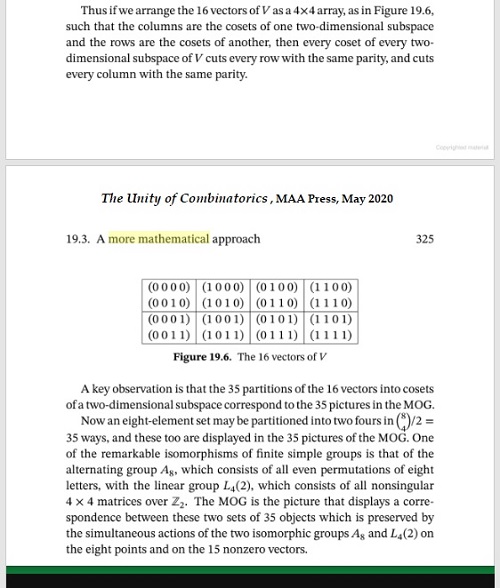

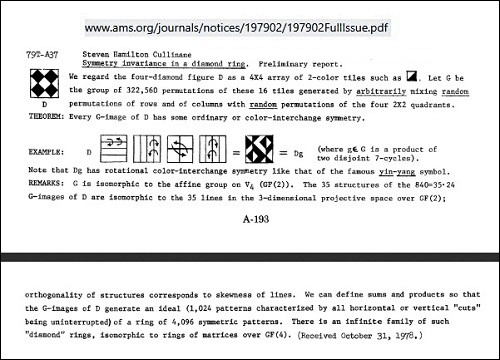





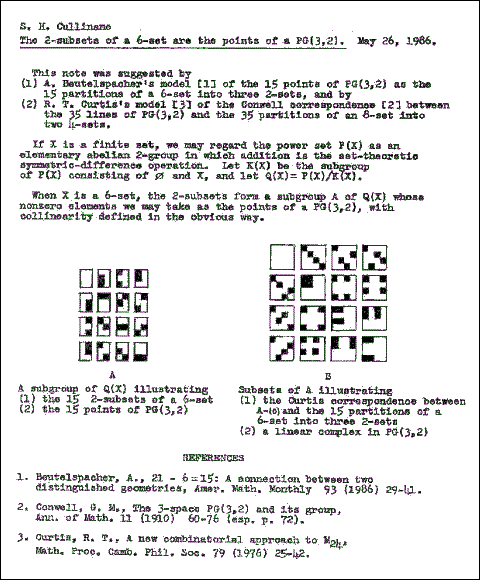


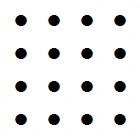
 .
.











